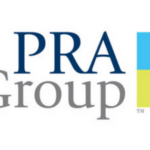Even though nothing has become official yet, if the Republicans are successful at adopting their own healthcare legislation, it is expected that the number of individuals without health insurance will increase, largely because of reductions in Medicaid funding.
Medicaid has intended to be a healthcare program for individuals and families with limited resources. Currently, Medicaid protects 74 million low-income individuals with health insurance. Since the Affordable Care Act became law, more than 30 states have expanded their Medicaid coverage, but that expansion is on the chopping block as the Republicans develop and debate their healthcare replacement.
If Medicaid funding is cut, then the number of individuals without healthcare coverage will increase, meaning more individuals will become self-pay patients.
Between 2013 and 2016, states that expanded their Medicaid saw the number of self-pay patients decrease 4%, which meant more revenue was flowing into the hospitals and healthcare facilities. A report by Crowe Horwath, which analyzed transactions at hospitals with more than 850 beds, has estimated that for every 2% of patients who are moved off Medicaid and go back to self-pay, there will be a corresponding decrease of 1% in revenue. As well, the average number of days that healthcare balances remain unpaid will increase by 30 days. Self-pay balances take, on average, nearly 97 days to be paid, compared with 65 days for Medicaid patients.
A copy of the report can be downloaded here.
Without insurance, individuals will also have more choices about where to go for their healthcare needs. Poor patient experiences will also have a negative effect on revenue because patients will just choose to go somewhere else, if they are not required to visit a specific facility because of their insurance.
Self-pay is going to be “Ground Zero” for healthcare facilities in terms of their profit margins, according to the report.
For the average hospital in a Medicaid expansion state, the combination of ACA repeal and more patients moving to high- deductible health plans (defined by the IRS as between $1,300 and $6,550 self-pay after insurance payment responsibility) has an estimated impact in the range of a 4.2% increase in the self-pay payer mix. In addition, the estimated impact on total net revenue is in the range of a 2.8% decrease. With hospital margins challenged by at-risk payments and increasing cost, any decline in net revenue will have signi cant repercussions.
The report provides three takeaways for healthcare facilities, and collection agencies should be sharing this information with their clients as well.
- Develop tools and techniques to quickly determine a patient’s ability to pay – with an emphasis on creating a positive financial interaction for those who have the means to cover their out-of-pocket payments
- Create multiple pathways for payments – including realistic payment plans, discounts on services, and Medicaid enrollment assistance
- Pricing transparency – with the ability for patients to shop (and sometimes negotiate) prices for certain services or diagnostics









